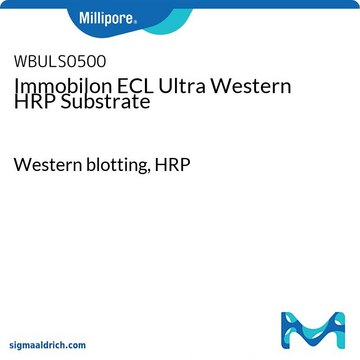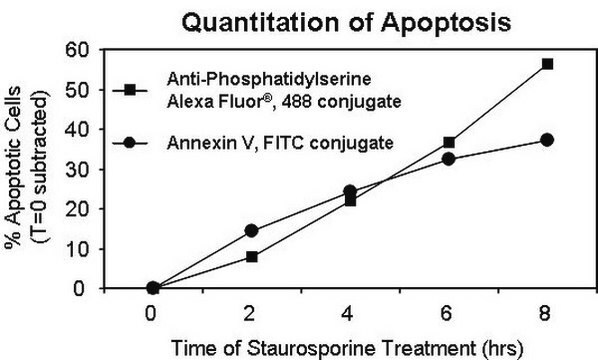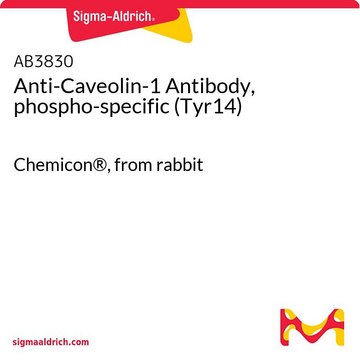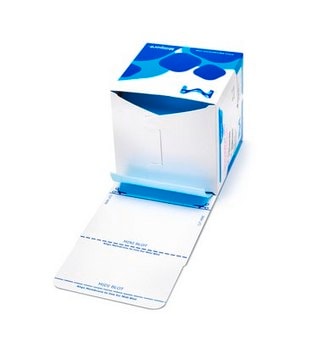05-480
Anti-Eck/EphA2 Antibody, clone D7
clone D7, Upstate®, from mouse
Synonym(s):
EPH receptor A2, Epithelial cell kinase, Tyrosine-protein kinase receptor ECK, ephrin receptor EphA2, epithelial cell receptor protein tyrosine kinase, protein tyrosine kinase, receptor protein tyrosine kinase regulated by p53 and E2F-1
About This Item
Recommended Products
biological source
mouse
Quality Level
antibody form
purified immunoglobulin
antibody product type
primary antibodies
clone
D7, monoclonal
species reactivity
mouse, canine, human, rat, bovine
manufacturer/tradename
Upstate®
technique(s)
activity assay: suitable
immunocytochemistry: suitable
immunoprecipitation (IP): suitable
western blot: suitable
isotype
IgG1
NCBI accession no.
UniProt accession no.
shipped in
dry ice
target post-translational modification
unmodified
Gene Information
bovine ... Epha2(512798)
human ... EPHA2(1969)
General description
Protein kinases are enzymes that transfer a phosphate group from a phosphate donor, generally the g phosphate of ATP, onto an acceptor amino acid in a substrate protein. By this basic mechanism, protein kinases mediate most of the signal transduction in eukaryotic cells, regulating cellular metabolism, transcription, cell cycle progression, cytoskeletal rearrangement and cell movement, apoptosis, and differentiation.
Specificity
Immunogen
Application
A previous lot of this antibody has been reported to have been used in an immunoprecipitation autophosphorylation assay, using a Mn-PIPES reaction buffer (Romer, L., 1994).
Immunoprecipitation:
A previous lot of this antibody has been reported to immunoprecipitate Eck from 500 µg of a human breast epithelial cell line which had been lysed in TBS containing 1% Triton X-100. Use 1-4 µg per reaction.
Immunocytochemistry:
A previous lot of this antibody has been reported to immunostain Eck in human, mouse and rat epithelial cells fixed with 3.7% formaldehyde solution and permeabilized with 0.5% Triton X-100 in TBS.
Neuroscience
Growth Cones & Axon Guidance
Quality
Western Blot Analysis:
0.5-2 µg/mL of this lot detected Eck in RIPA lysates from human A431 and previously from foreskin fibroblasts, murine 3T3/A31 and rat L6 cells.
Target description
Physical form
Storage and Stability
Handling Recommendations:
Upon receipt, and prior to removing the cap, centrifuge the vial and gently mix the solution. Aliquot into microcentrifuge tubes and store at -20°C. Avoid repeated freeze/thaw cycles, which may damage IgG and affect product performance. NOTE: Variability in freezer temperatures below -20°C may cause glycerol-containing solutions to become frozen during storage.
Analysis Note
Positive Antigen Control: Catalog #12-301, non-stimulated A431 cell lysate. Add 2.5µL of 2-mercaptoethanol/100µL of lysate and boil for 5 minutes to reduce the preparation. Load 20µg of reduced lysate per lane for minigels.
Other Notes
Legal Information
Disclaimer
Not finding the right product?
Try our Product Selector Tool.
Storage Class Code
10 - Combustible liquids
WGK
WGK 1
Certificates of Analysis (COA)
Search for Certificates of Analysis (COA) by entering the products Lot/Batch Number. Lot and Batch Numbers can be found on a product’s label following the words ‘Lot’ or ‘Batch’.
Already Own This Product?
Find documentation for the products that you have recently purchased in the Document Library.
Our team of scientists has experience in all areas of research including Life Science, Material Science, Chemical Synthesis, Chromatography, Analytical and many others.
Contact Technical Service







